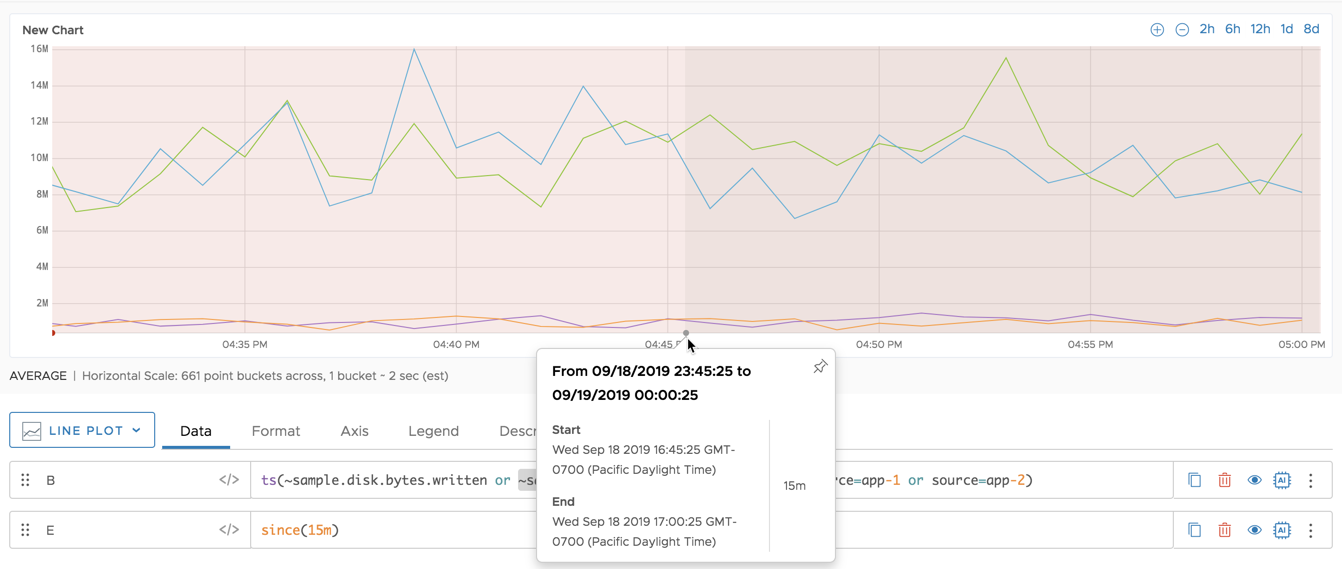Summary
since(<eventsExpression>)
since(<timeWindow>)
You can use since() with an event set or with a time window.
| Event set transformation function | Returns a set of synthetic ongoing events that start at the same time as the events described by eventsExpression, but have no end time. |
| Event creation function |
Creates a single synthetic event that started timeWindow ago and ended “now”. |
Parameters
Event Set Transformation Function
| Parameter | Description |
|---|---|
| eventExpression | Set of events that determine the start times of the returned synthetic events. |
Event Creation Function
| Parameter | Description |
|---|---|
| timeWindow | Length of the new event. You can specify a time measurement based on the clock or calendar (1s, 1m, 1h, 1d, 1w), the window length (1vw) of the chart, or the bucket size (1bw) of the chart. Default is minutes if the unit is not specified. |
Description
You can use the since() event function:
- With an
eventsExpressionto return a set of synthetic events. - With a
timeWindowto return a single synthetic event.
Note: Synthetic events are displayed by the query, but not stored in Wavefront.
Event Set Transformation Function
The since() event set transformation function returns a set of synthetic ongoing events, where each synthetic event:
- Starts at the same time as a corresponding event described by the expression.
- Continues indefinitely.
In effect, since() transforms all input events to ongoing events.
The following diagram represents an events() query that returns 3 events (A, B, and C). Using that events() query as the input to since() produces 3 synthetic events that each start at the same time as the corresponding input event:

Event Creation Function
The since() event creation function creates a single synthetic event that started a specified time earlier and continues to “now”. In a live data chart, the start time moves forward in time so that the event always ends at the current time.
The following screen shot shows a single synthetic event that started 15 minutes before “now”, and continues up to the current time:
